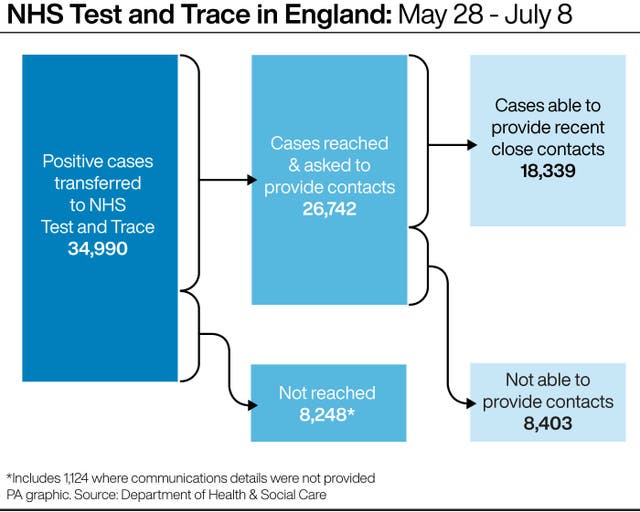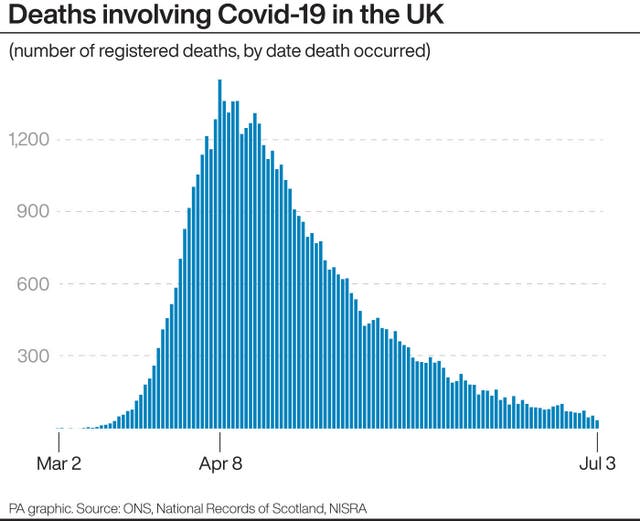
Contact tracing cannot sufficiently reduce transmission of coronavirus if a person is not tested within three days of developing symptoms, a new study claims.
Researchers said that the R value, which is number of people that a single infected person will go on to infect, can be reduced from 1.2 to 0.8 through contact tracing in the “most optimistic scenario”.
But for that to work, at least 80% of eligible people must be tested, there can be no delays in testing after the onset of symptoms, and at least 80% of contacts must be identified on the same day as test results are received.
The study – published in The Lancet Public Health journal – found that if testing is delayed by three days or more, even a system that is able to trace 100% of contacts with no delays cannot bring the R value below 1.

Professor Mirjam Kretzschmar, one of the lead authors of the study, from the University of Utrecht in the Netherlands, said: “This study reinforces findings from other modelling studies, showing that contact tracing can be an effective intervention to prevent spread of the SARS-CoV-2 virus, but only if the proportion of contacts traced is high and the process is fast.”
Researchers determined that reducing the time between a person developing symptoms and receiving a test result was the most important factor for improving contact tracing.
For the measure to be successful, it must keep the R value below 1, meaning that the number of individuals who will be infected by a single person must be less than one, the study said.
The system works by tracking down individuals who have been in close contact with an infected person so they can be isolated to prevent further spread of the virus.
While conventional tracing methods involve a public health professional calling an infected person so they can recall everyone they have been in recent contact with, several countries have introduced mobile apps to speed up the process.

The NHS is building a mobile tracing app based on a model developed by Apple and Google, but it is not expected to be ready before the winter.
The mathematical model used by researchers assumed that about 40% of virus transmission occurs before a person develops symptoms.
In the absence of a strategy to reduce transmission, an infected person will transmit the virus to an average of 2.5 people, while the introduction of physical distancing measures reduced it to 1.2, the study said.
The model assumed that conventional tracing takes a minimum of three days, while the mobile app can track down contacts instantaneously.
It found that conventional contact tracing will only keep the R value below 1 if people with coronavirus receive a positive test result on the same day they develop symptoms.
If a person with symptoms has their test delayed by two days, keeping the R value below 1 would require their contacts to be traced within a day and at least 80% of these identified, the model predicted.
Contact tracing based on mobile app technology can accommodate a delay in testing of up to two days and keep the R number below 1, as long as at least 80% of contacts are tracked down, the study found.
Study author Professor Marc Bonten, from the University of Utrecht, said minimising testing delays had the largest impact on reducing transmission, and was therefore the “most critical factor” in the success of the tracing system.
The authors noted that the model did not take into account the age structure of the population, which could influence the proportion of asymptomatic cases.


Comments: Our rules
We want our comments to be a lively and valuable part of our community - a place where readers can debate and engage with the most important local issues. The ability to comment on our stories is a privilege, not a right, however, and that privilege may be withdrawn if it is abused or misused.
Please report any comments that break our rules.
Read the rules here